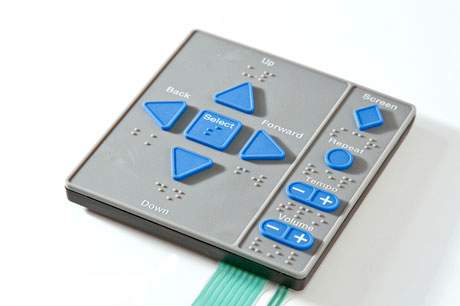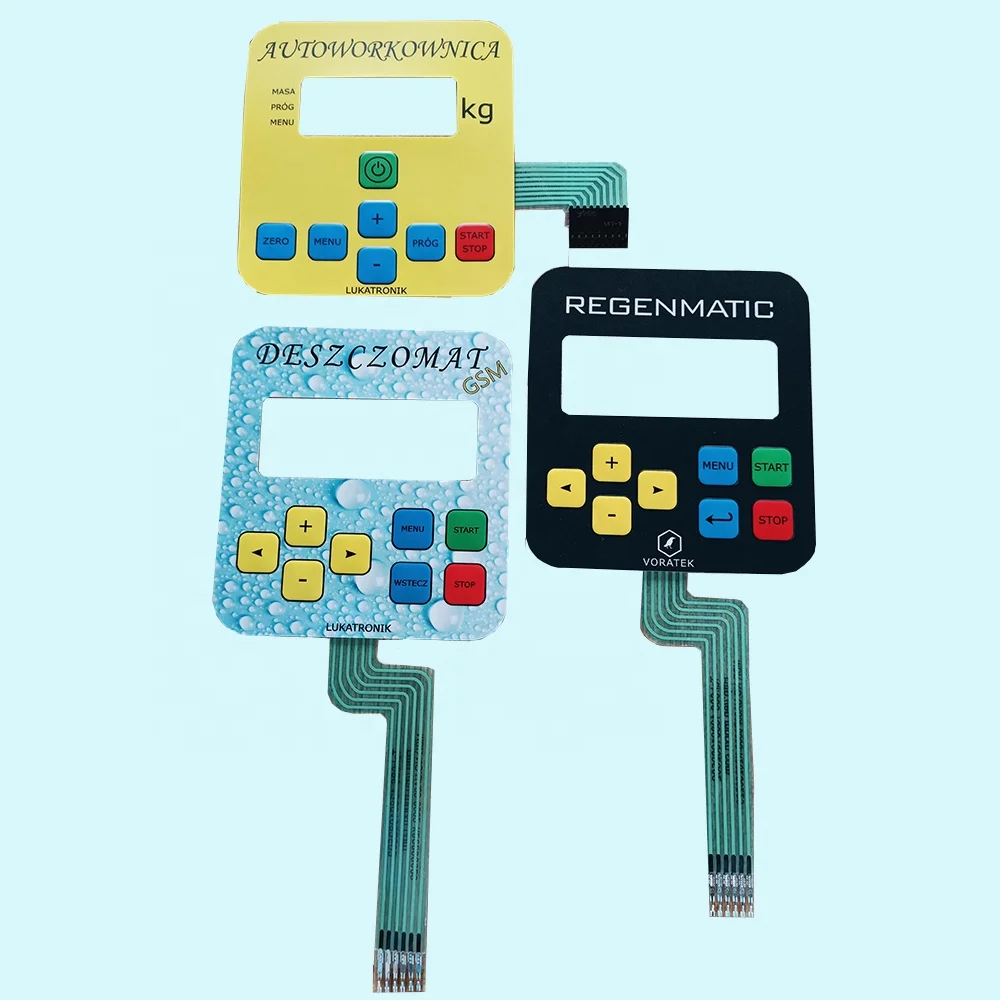Creative Design Options from a Premier Membrane Switch Manufacturer
Comprehending the Value of Membrane Switch in Modern Electronic Devices and Their Applications
Membrane switches function as an essential element in modern-day electronics, using a reliable user interface for individual interaction. Their adjustable and lightweight nature makes them appropriate for a variety of applications throughout diverse sectors. Understanding their key components and advantages can offer insights into their expanding significance. As technology remains to development, the advancement of Membrane switches over questions concerning their future applications and style developments. What lies in advance in this dynamic field?
What Are Membrane Switches?
Membrane switches are vital parts in modern electronics, working as interface that assist in interaction in between gadgets and individuals. These switches include a number of layers, including a graphic overlay, a sticky layer, and a circuit layer, all of which interact to produce a durable and functional interface. The design permits for a flat, low-profile service that can be personalized concerning dimension, form, and aesthetic look, making them suitable for various applications, from customer electronics to clinical devices. The tactile responses offered by Membrane changes enhances customer experience, while their resistance to dirt and moisture makes them ideal for challenging settings. Membrane switches can incorporate attributes such as backlighting and published graphics, better expanding their functionality. Their flexibility and effectiveness make them a recommended option in markets where reliability and convenience of usage are paramount, ultimately contributing to the seamless operation of modern electronic tools.
Key Components of Membrane Switches
While numerous components add to the functionality of a membrane button, 3 primary layers play significant duties in its design and operation. The leading layer, generally made from a sturdy polymer, offers as the user interface for customer interaction, commonly including published graphics and symbols. Below this is the spacer layer, which maintains the essential distance in between the leading layer and the circuit layer. This spacer layer assurances that the switch turns on only when pushed, preventing accidental inputs. Ultimately, the circuit layer has conductive traces that complete the electrical circuit when the leading layer is dispirited. These traces can be made from various products, consisting of copper or silver. Together, these elements develop a reputable and robust device that is compact and functional, appropriate for a large variety of electronic applications, from house appliances to clinical gadgets. Understanding these essential elements is crucial for appreciating the overall functionality of Membrane buttons.
Advantages of Using Membrane Switches Over

Membrane Switch Manufacturing Refine
Comprehending the Membrane button production procedure discloses the intricate steps involved in producing these vital elements. The process commonly begins with the design stage, where formats and specs are developed utilizing specialized software program. Following this, the visuals overlay is published on an adaptable substrate, typically using high-resolution printing strategies to assure quality and precision.Next, the sticky layers are used, which offer to bond the different parts together. The circuit layers, made from conductive inks or materials, are after that published onto a separate substratum. These layers are very carefully aligned and laminated flooring to produce a practical switch.After assembly, the switches go through examining to confirm performance and durability. Quality control procedures are executed throughout the procedure to identify and correct any kind of problems. Finally, the completed Membrane buttons are packaged and planned for distribution, ready to meet the demands of modern digital applications.
Applications of Membrane Switches Over in Numerous Industries
Membrane buttons are progressively made use of across various markets, especially in clinical devices and customer electronics. In the medical area, they give reliable control interfaces for gadgets that call for exact operation. In customer electronics, these buttons improve customer communication by offering streamlined and receptive user interfaces.
Medical Tools Control
Many contemporary clinical devices use Membrane buttons for streamlined operation and boosted customer interaction. These buttons provide a trusted, resilient user interface for a range of applications, consisting of analysis devices, individual surveillance systems, and medical instruments. Their personalized styles allow for particular formats that can suit the distinct requirements of health care experts, making certain intuitive navigation and effective access to necessary features. In addition, Membrane buttons are immune to contaminants, making them appropriate for sterilized settings. The tactile responses they offer can enhance customer self-confidence, minimizing the risk of mistakes during vital medical procedures. In general, the assimilation of Membrane switches in clinical equipment significantly contributes to improved operational effectiveness and person safety and security in health care settings.
Customer Electronics Interfaces
In the domain name of customer electronics, Membrane switches play a vital function in boosting customer interfaces across a wide variety of tools. These switches are essential to products such as remotes, microwaves, and pc gaming consoles, providing a effective and easy to use user interface. Their layout permits for a you can check here smooth integration of graphics and capability, allowing makers official statement to produce sleek, modern-day looks without endangering usability. Membrane switches are additionally understood for their toughness, commonly standing up to considerable usage and exposure to numerous environmental problems. Additionally, they can include features like backlighting and tactile feedback, additional improving the customer experience. As consumer demands for advanced yet intuitive interfaces grow, Membrane changes remain to be a vital element beforehand digital tool functionality.
Style Factors To Consider for Membrane Changes
Creating reliable Membrane switches calls for cautious attention to different variables that affect both capability and customer experience. One crucial consideration is the choice of materials, as they can influence durability, tactile responses, and visual charm. Selecting an ideal adhesive is necessary for ensuring long-lasting bond and resistance to environmental factors.In enhancement, the layout and layout of the button should suit individual interaction, with button dimensions and spacing optimized for convenience of use. The consolidation of graphics and labeling should prioritize clarity and exposure under numerous lights conditions.Consideration of electrical features, such as actuation pressure and button sensitivity, will certainly boost the responsiveness of the Membrane switch. The layout ought to accommodate making procedures to assure cost-effectiveness and prompt production. In general, a well-balanced style improves both the customer and the performance experience of Membrane switches in modern-day electronics.

Future Patterns in Membrane Switch Innovation
As innovation continues to advance, Membrane buttons are poised to incorporate brand-new advancements that will enhance their functionality and application in numerous fields. One considerable pattern is the incorporation of sturdy and versatile products, which will raise the lifespan and dependability of these switches. Enhanced surface area appearances and customizable graphics are also anticipated, permitting even more instinctive individual interfaces.Moreover, the combination of clever technology, such as touch-sensitive surfaces and haptic feedback, is expected to enhance customer interaction, making Membrane switches over a lot more receptive and interesting. Furthermore, advances in published electronic devices will certainly allow more complex circuitry within thinner accounts, additionally broadening style possibilities.Sustainability will also play an important duty in future growths, as suppliers discover environment-friendly products and production processes. On the whole, these fads will assure that Membrane changes continue to be go to this website appropriate and indispensable in a increasingly electronic and interconnected world.
Often Asked Inquiries
Exactly How Do Membrane Switches Compare to Traditional Mechanical Switches?
Membrane switches over offer benefits over typical mechanical switches, consisting of reduced size, lighter weight, and improved longevity. They usually provide a sealed surface, improving resistance to dirt and moisture, making them excellent for varied applications.
What Materials Are Generally Utilized in Membrane Switch Building And Construction?

Can Membrane Switches Over Withstand Extreme Environmental Issues?
Membrane buttons can withstand severe ecological conditions, relying on their style and materials. High-quality constructions usually include toughness against temperature changes, moisture, and direct exposure to chemicals, making them ideal for numerous demanding applications throughout markets.
For How Long Do Membrane Switches Over Generally Last Before Failure?
Membrane changes normally exhibit a life-span varying from 1 to 10 million actuations, depending on aspects such as use frequency, environmental conditions, and producing top quality. Regular upkeep can prolong their longevity and functional reliability considerably.
Are Membrane Switches Over Adjustable for Particular Applications?
Membrane switches are indeed customizable for certain applications. They can be customized in design, dimension, and performance, allowing suppliers to fulfill distinct user needs and improve product aesthetic appeals while maintaining operational performance and durability. Membrane switches are crucial components in modern-day electronics, serving as customer interfaces that facilitate interaction in between individuals and devices. The tactile feedback provided by Membrane changes boosts customer experience, while their resistance to dust and dampness makes them perfect for testing settings. The consolidation of graphics and labeling ought to focus on quality and presence under different lights conditions.Consideration of electric attributes, such as actuation pressure and switch sensitivity, will certainly enhance the responsiveness of the Membrane switch. Boosted surface area textures and adjustable graphics are likewise prepared for, allowing for even more instinctive customer interfaces.Moreover, the combination of smart technology, such as touch-sensitive surfaces and haptic responses, is anticipated to boost customer interaction, making Membrane switches a lot more receptive and engaging. Membrane switches deal advantages over conventional mechanical switches, including reduced dimension, lighter weight, and enhanced durability.